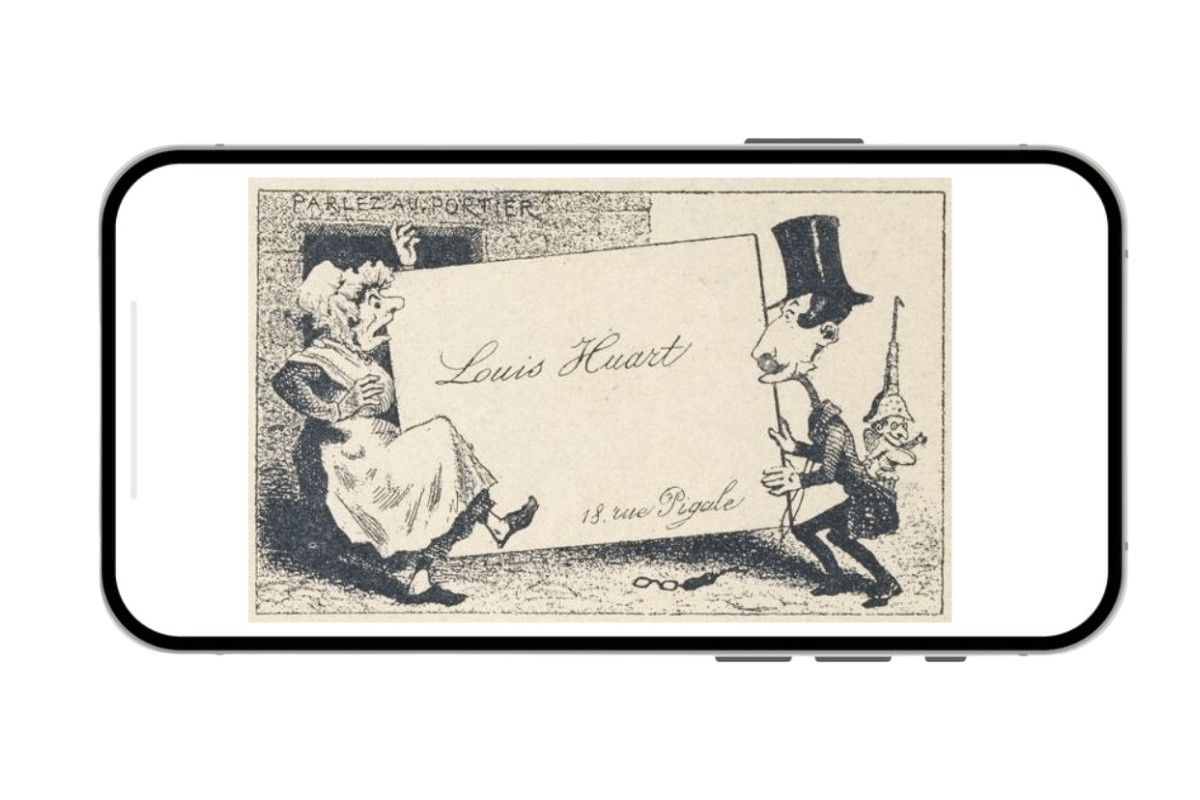Believe it or not, the idea of business card is as old as the Industrial Revolution. For over 250 years now, the business card has evolved into a practical and now ubiquitous marketing tool for businesses.
In this post, we'll take a look at how business cards were designed in the past, what they were used for, how they look and how they are used today.
So, how did the journey begin from a simple little card to an indispensable medium for contact exchange?
Let us begin from the beginnings of the business card
In the past, business cards also came in other formats. What began over 250 years ago as a visiting card turned into a status symbol for managers. Let's take a look at when and where the history of the business card began.
Louis XIV
The origin of the visiting card began in 17th century France. During the reign of the Sun King Louis XIV, it became a tradition to leave a visiting card, if one did not meet the respective master of the house in person, which is why the visiting card came to be called a visiting card.
On the basis of a few features noted on the card, the master of the house or even the lady of the house could see for what reason the visitor was on site. These cards often featured the monogram or coat of arms of the bearer. Graphic prints of various situations of different people were also the subject of the business cards.

Long story
Business cards have a long history. As early as the early 17th century, noblemen and travelers gave wooden cards to contact each other. Although the little cards were not printed with first and last names, they were kind of business cards.
The early form of the business card was brought to America by Europeans, where the little cards became an important marketing tool.
Illustrations of own work
The first paper business cards were made in France in the 18th century. These cards were mostly simple little cards printed with names and one's profession. On the basis of a few characteristics noted on the card, the master of the house or even the lady of the house could see for what reason the visitor was there.
Business cards throughout history
In France, business cards became a must-have in the business world. They were used primarily for professional purposes. From then on, the business cards of that time have more in common with today's use, but the cards of that time were designed a lot more ostentatiously.
Optics were decisive
Especially in fine society, the appearance of the business card was important. The business cards of that time were works of art. The purpose of the business card is still similar today. Different layouts are made, the majority of business cards have a similar format and make use of similar elements.
Printing techniques refined business cards
However, here too, it is primarily upscale circles that use the business card in the form of more extravagant designs.
Many options
Over the years, business cards have changed size, shape and color. Today, they come in a variety of materials, from plain paper to thicker cardstock. 85 by 45 millimeters: Not much fits on paper business cards today.
Part of modern business life
Business cards are an essential part of modern business life, and a sophisticated business card is an important part of an entrepreneur's professional image. They provide a way to get in touch with potential customers, partners and investors and inform them about a company's services and products.
The business card in transition
In Egypt, the business card was added to gifts, as a small greeting or saying card. Among the French, the business card was mainly used to give a card when visiting.
It was not until the 20th century that more information was printed on the business card. Today, we know the business card mainly from everyday business life as a small card on which the name, address, telephone number and e-mail address are noted.
The design and printing of earlier business cards over the centuries
From the 17th century onwards, the business card became common practice in France, Germany and England. The design was increasingly made with the technique of copperplate engraving. Special embossing and illustrations of important sceneries formed the basis of printing. This machine was used to print up to 100000 business cards per day. It was distributed in England in 1889 by the company Oscar Friedheim.
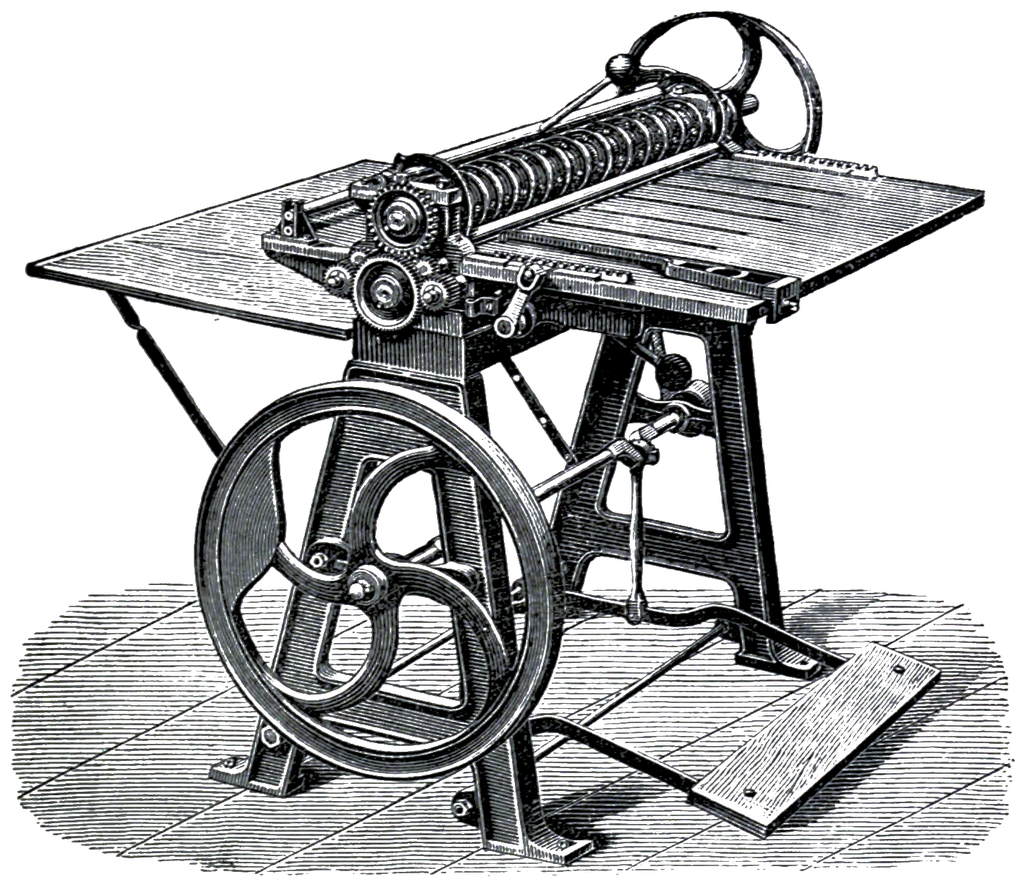
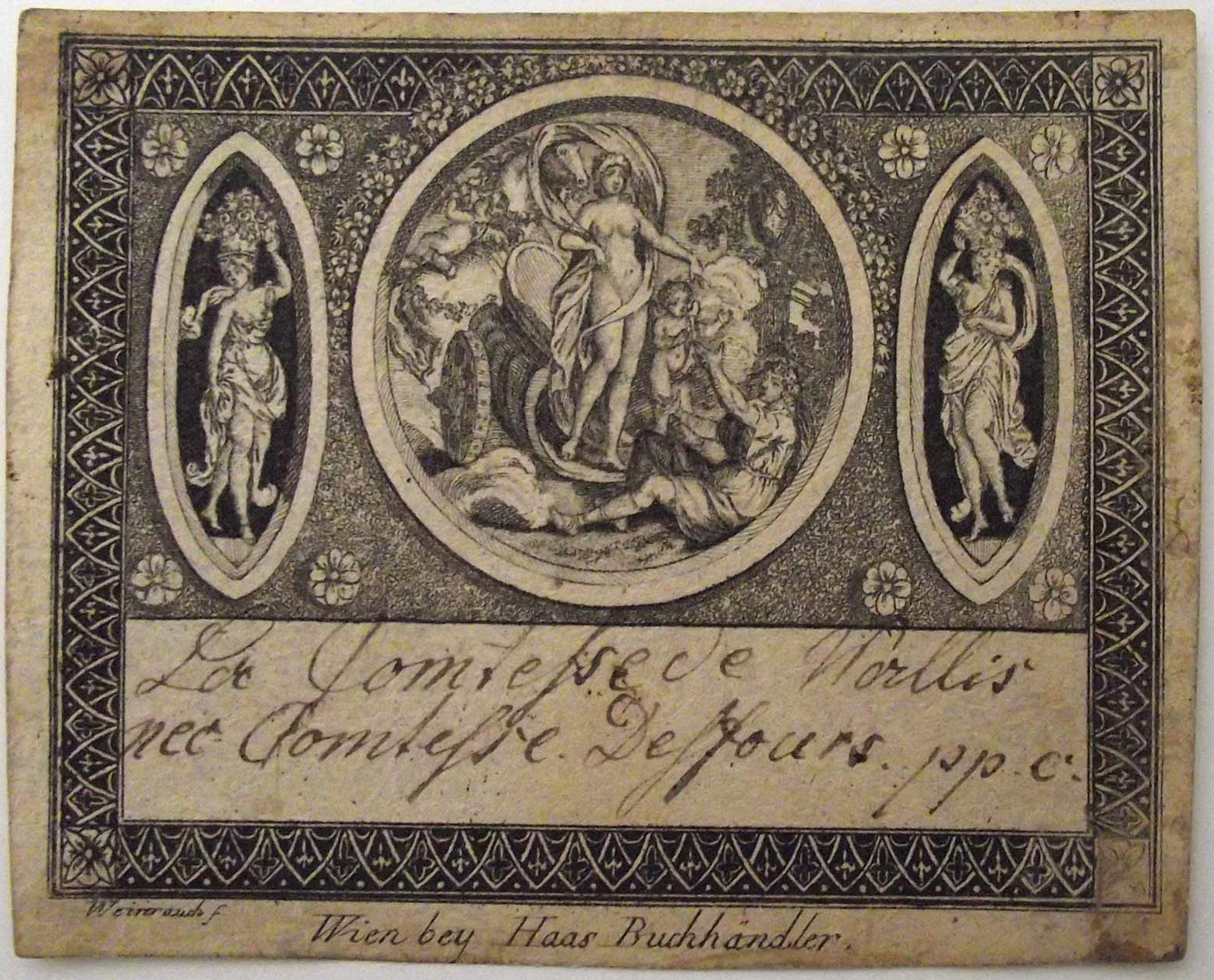
The picture shows a visiting card around 1800, on which the Comtesse Wollis and the Comtess Defours are depicted. The business card is worked with a copperplate engraving. The artist's name was Weinrauch bei Haas. The format in this period was 7.2 x 9.2 cm.
The 10 most interesting facts from the history of the business card
-
The first card was a playing card on which you wrote your name on the back and this was then inserted into the door lock of the respective gentleman.
-
In the past, people kept their business cards in a case, but today they keep them in their smartphone wallet.
-
In the past, mainly artists used the technique of copperplate engraving to make the business cards.
-
In Germany, a particularly successful engraver was Johann Michael Mettenleiter.
-
In the case of a noble gentleman, the business card was judged by whether the copperplate engraving was genuine - back smooth and only the front embossed.
-
Using a certain folding technique, the lady of the house and the master of the house recognized the reason for the visit. For this purpose, the upper left corner was bent, which meant that unfortunately they had not met.
-
Kaiser Wilhelm had its own format with the dimension: 12,0 x 8,0 cm
-
Too much information on a paper business card makes an unprofessional impression, with the introduction of the digital business card this is changing due to storage capacity.
-
In Japan, people even pay attention to how they hand their business cards to their business partners, namely only at the corners and please do not cover the logo!
-
Business cards strengthen the corporate culture, when even the cleaner gets their own business card, everyone feels welcome and recognized.
Meaning and function of the former business cards
Visit
A little fun fact: The French word Visite means visit. Later, due to the advent of modern printing technology, the card evolved into a versatile little card in a wide variety of designs.
Function
At that time, the business card thus took on the function of an answering machine or a message. The point was to let people know that you had arrived and who you were in the first place.
Good impression counts
The business cards were supposed to make a good impression and therefore people paid attention to neat and imaginative design. One's appearance, just like the appearance of the business card, played a prominent role. The business card reflected one's class and the status of the owner.
The business card as a figurehead
Business cards had the standing of their own currency and were a very important object to represent oneself. This is also the reason why in the past, with the technique of copperplate engraving, proper images of the owners were embossed. Nowadays, at least on paper business cards do not print their own photos.
Rules of etiquette during the visit
The visiting card, or carte de visite, was always measured in Germany by the quality of the paper and the presentation. The more impressive the work, the more expensive and valuable the visiting card was.
The custom was especially not to throw away the business cards, but to keep them in a fine case. The business card was already highly valued in the past.
Function and meaning of the business card today
Nowadays, the business card is used primarily in digital form to make professional contacts and this in a very uncomplicated and fast way, namely via the smartphone.
Smartphone as a case
The smartphone represents today's wallet of past times. In the form of a wallet, all contacts can be stored and organized. The loss of contact information is also becoming increasingly unlikely, compared to the use of a paper business card.
Important information about the owner
The most important information about a person: details such as the name, position, photo of the owner, website, files are noted on the digital business card.
Digital business cards create clarity
The importance is increasing more and more, because since the Internet and Big Data, people have to bundle, manage and administer information especially. For this, you need tools with which this works clearly.
Usable everywhere
At a trade show, a convention, or in an online meeting, contacts can be gathered anywhere and are essential for professional success.
The Business Card - No Longer a Status Symbol Today
In the nineties, the business card was THE status symbol. The rank of a businessman could be read from the paper quality of his business card. The business card was more than just a piece of paper back then. It had an enormous impact. Notes were made on the backs and people had stacks of business cards at home after events and meetings.
Nowadays, paper business cards are no longer a status symbol. Quite the opposite, in fact, as they are increasingly being forgotten. Nowadays, people scan QR codes at events, trade shows, and functions instead, or share their contact information with their smartphone using NFC technology.
The digital business card as a website - Simply better than the normal paper business card
The final step in the development of the business card is the complete digital version of a business card. Why rely on a business card that only has space for the name, phone number, email address and address and then, after being issued, very likely ends up directly in the trash?
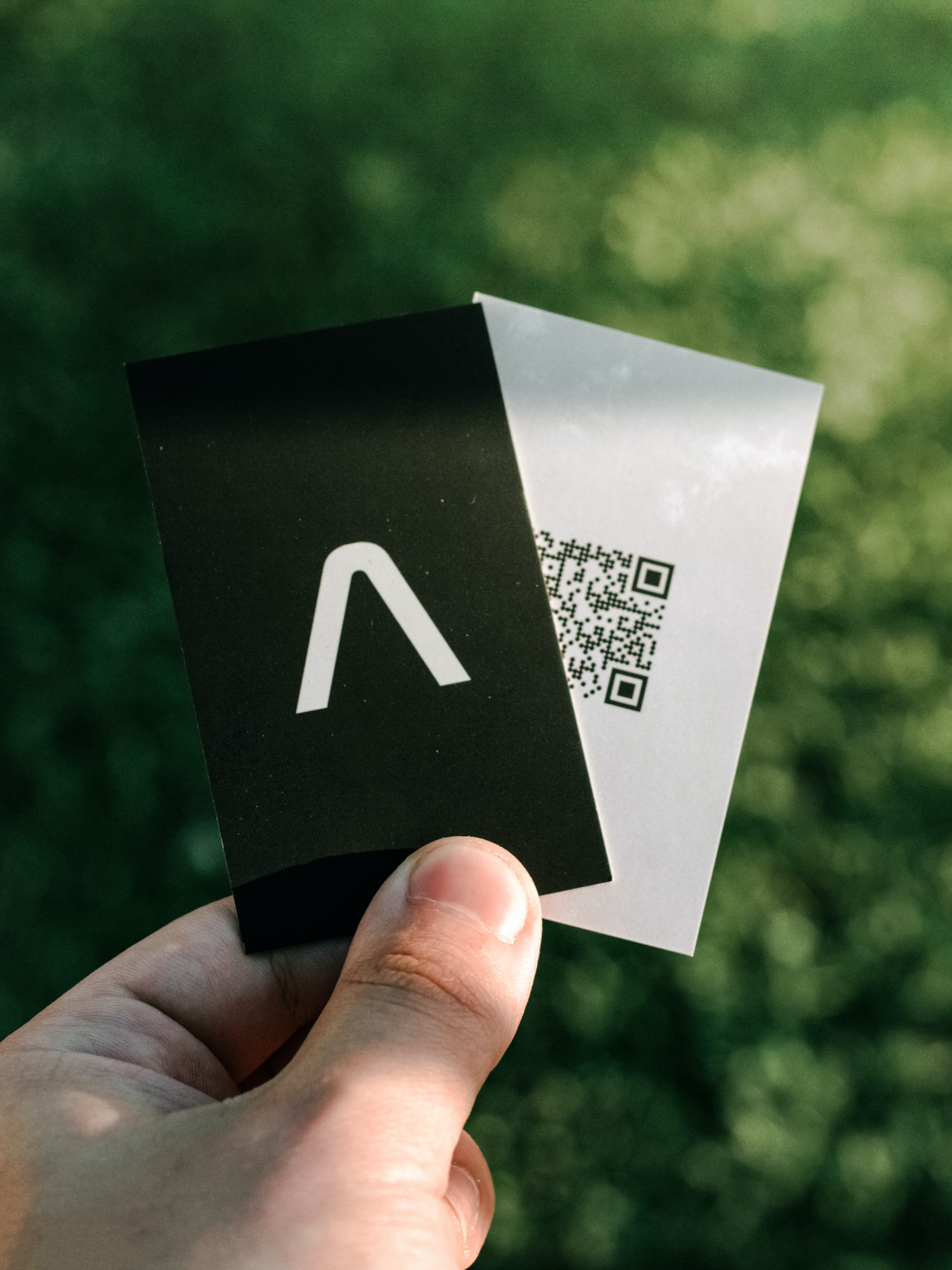
With the digital business card from Lemontaps you take a big step towards sustainability and digitalization. You have a unique presence, not only online, but also in the analog world.
Lemontaps digital business card is THE tool for networking, lead generation and contact exchange. It saves costs and resources without sacrificing anything.
Particularly important for companies today
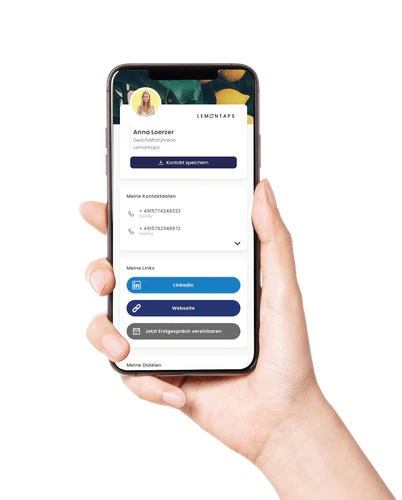
The corporate design of a company is decisive for the design of the business card. Color, font and photos are chosen to match the look of the company.
Final words
Business cards have been a valuable means of communication for many centuries. Not only they come from an ancient idea, but also the whole way of networking.
Their success is based on a simple but effective idea that has accompanied us for a long time and will continue to do so.
The history of the business card shows how business cards have evolved over time and where they may lead in the future. It is interesting to note that some aspects of the former business card are definitely gaining importance again today. Think of the digital business card, on which a personal profile picture is added, as was common practice among nobles in the past.


 Contact sales
Contact sales
 Support
Support
 Login
Login



